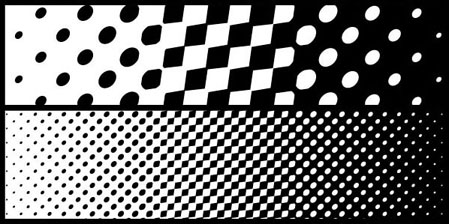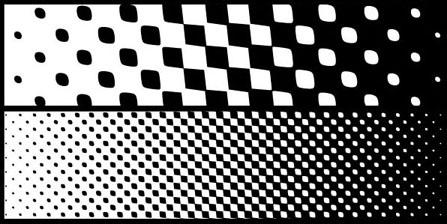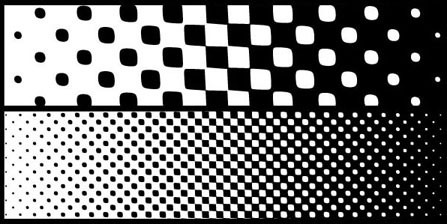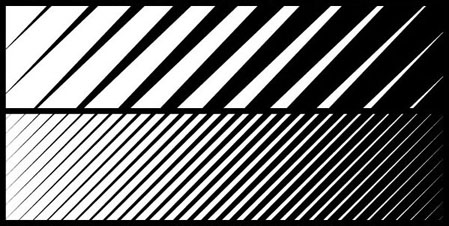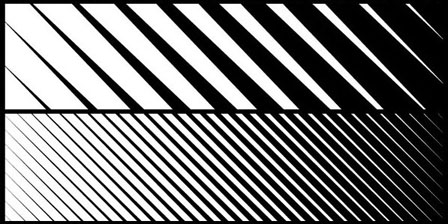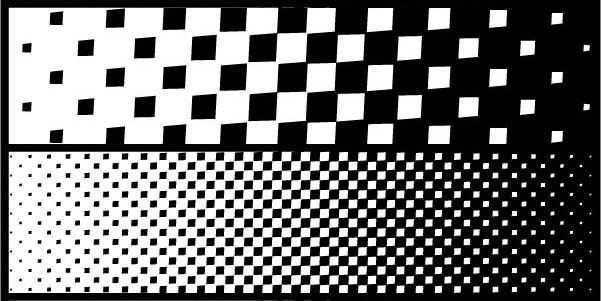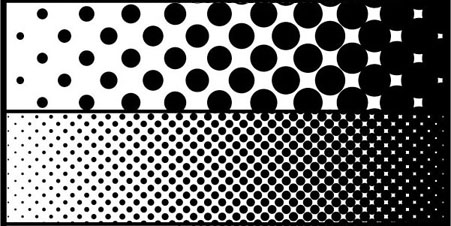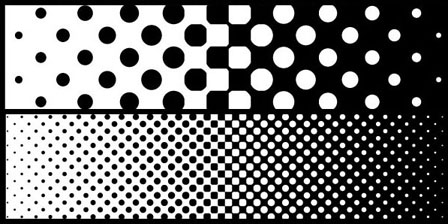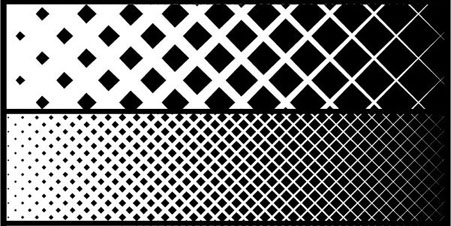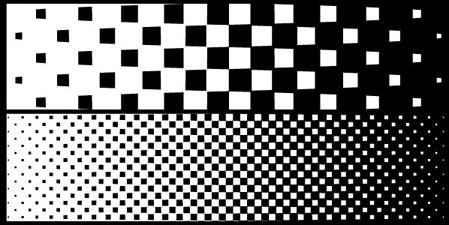With CTP there is little difference between dot shapes in the plating process but there are some subtle differences on press.
In film workflow, mechanical gain in the imaging and plating process exacerbates mechanical gain on the plates and cause as non-linearities where neighboring dot structures touch, causing a tonal jump on the plate. This problem is further compounded by mechanical gain on press, leading to even larger visual tone jumps where the dots meet.
Thermal CTP eliminates all mechanical gain in the plating process. Even where neighboring dot structures touch, there is no bleeding of the pixels or dot shape into one another like there is in an analog-and Gaussian-based exposure system. The result is accurate tonal reproduction onto the plate, so that Round, Euclidean, and Elliptical all produce the same physical dot area on the plate. However, there are subtle mechanical differences between the dot shapes, based on how they respond on press, because the compounding effect of plate gain has been eliminated and the tone jumps are not nearly as obvious.
The accuracy of pixel-for-pixel reproduction, and therefore the edges of each halftone dot, is wholly dependant on the optical resolution of the device and media. For CTP devices that do not deliver accurate reproduction of each pixel, differences will be less subtle than on a CTP device.
For more information about how Elliptical, Heavy Elliptical, and Light Elliptical dot shapes output differently, see Tell me more about elliptical dot shape differences.
Dot shape descriptions
Elliptical
Use this dot shape to avoid the sharp transition at 50 percent that is characteristic of the Euclidean dot shape. This is an excellent dot shape for general use. However, it is not suitable for printing flesh tones, as the chaining of the Elliptical dots at 40 percent and 60 percent may cause visible streaking in the skin tones under certain printing conditions. The Elliptical dot shape has three members: EllipticalP, Heavy Elliptical, and Light Elliptical.
Figure 1. EllipticalP
Figure 2. Heavy Elliptical
Figure 3. Light Elliptical
Line
Use the line spot dot shape for special effects. The line spot dot shape works best with a nonstandard set of angles. The line spot dot shape places lines at the angle requested. As density increases, the lines get thicker. For example, Magenta = 45°, Yellow = 135°, Cyan = 105°, and Black = 165° work well together to create a line spot dot shape. The line spot dot shape has two members: Line and Line 1, as shown below:
Figure 4. Line
Figure 5. Line1
Rhomboid
The rhomboid dot shape is similar to the Square1 dot shape, but the rhomboid dot is angled like elliptical dots. The rhomboid dot retains its shape as it grows.
Figure 6. Rhomboid
Round
A commonly used dot shape that gives a smooth appearance in highlights and midtones. It is commonly used in imaging flesh tones and images with high and medium key detail. Dot gain and tonal jumps can be a problem in the shadow areas, because the white space at the center of four adjoining circles can easily become filled with additional ink as the dots grow and begin touching. However, with accurate and stable imaging, shadow detail is preserved remarkably well on press.
Figure 7. Round
RoundSquare (Euclidean)
Also known as Euclidean, this general-purpose dot shape reduces dot gain in the shadow areas, but creates a tonal jump at 50% where the corners of the checkerboard touch and cause excess ink to bridge between the dots. The RoundSquare dot shape is used for general applications, where the midtone tints are not critical to the image. It is particularly suited to high and low key images.
Figure 8. Euclidean
Square
Use the square dot shape for special effects, especially with coarse screens. The square dot shape retains this shape as it grows. The square dot shape is aligned with the screen angle and does not start to touch until it is close to 100 percent of the area, when individual pixels begin to fill in.
The crossed lines that result from its negative spaces result in a crosshatch look. The square dot shape has two members: Square and Square 1, as shown below:
Figure 9. Square
Figure 10. Square 1
